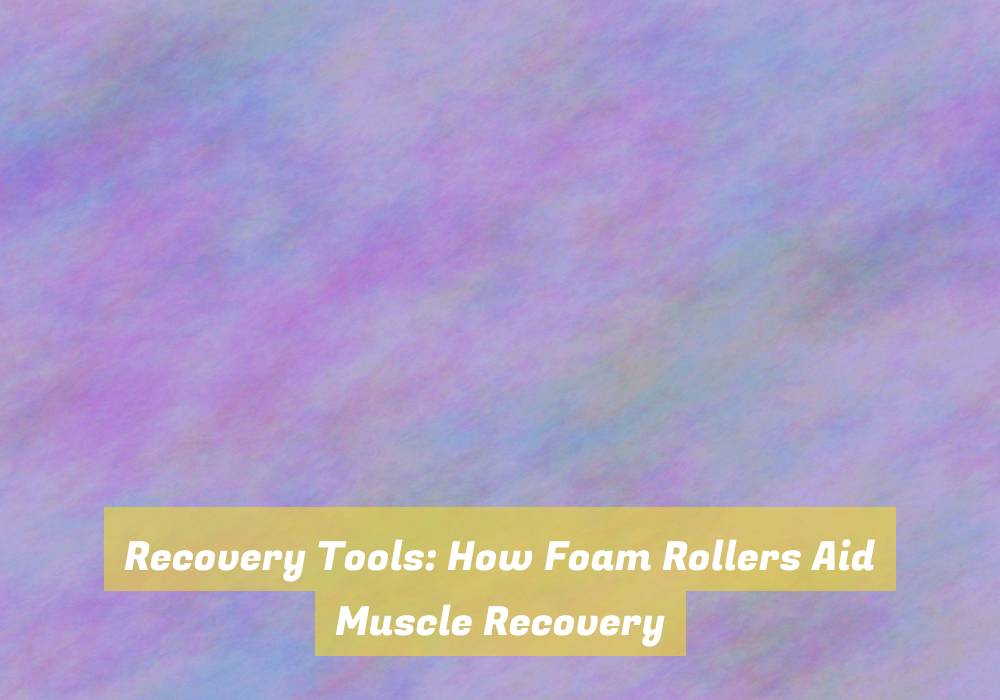Recovery Tools: How Foam Rollers Aid Muscle Recovery
Have you ever wondered how athletes manage to recover quickly from intense workouts and competitions? The answer may lie in a simple yet effective tool: the foam roller.
You might be surprised to learn just how much this seemingly innocuous piece of equipment can aid in muscle recovery.
Whether youG??re an athlete or someone who simply enjoys staying active, understanding the mechanics and benefits of foam rolling could be the missing piece in your recovery routine.
Understanding Foam Rolling Mechanics
To understand foam rolling mechanics, you need to grasp the concept of myofascial release and how foam rolling applies pressure to the muscles and fascia.
Myofascial release is the technique of applying sustained pressure to the myofascial connective tissue to eliminate restrictions and restore motion.
When you use a foam roller, it essentially acts as a self-myofascial release tool. As you roll over the muscles, the pressure from the foam roller helps to break up adhesions and scar tissue that may have formed within the muscles and fascia, leading to improved blood flow and flexibility.
The mechanics of foam rolling involve using your own body weight to apply pressure to specific areas, and then rolling back and forth over those areas to target trigger points and tight spots. This process helps to release tension, increase circulation, and ultimately promote muscle recovery.
Benefits of Foam Rolling for Recovery
Foam rolling can significantly aid in accelerating muscle recovery after strenuous physical activity. By applying pressure to specific points on your muscles, foam rolling helps to release tension and improve blood flow to the targeted areas. This increased blood flow can help to reduce muscle soreness and fatigue, allowing for a quicker recovery process.
Additionally, foam rolling can also help to break up adhesions and scar tissue that may have formed in the muscles as a result of intense exercise, promoting better overall muscle health and function.
Another benefit of foam rolling for recovery is its ability to enhance flexibility and range of motion. By targeting tight and restricted areas in the muscles, foam rolling can help to improve their elasticity and loosen up any knots or trigger points that may have developed. This can be particularly beneficial in preventing future injuries and ensuring that your muscles are able to perform at their best during subsequent workouts.
Incorporating foam rolling into your post-workout routine can also contribute to better overall performance and readiness for future physical activities. By reducing muscle tension and promoting better circulation, foam rolling can help you recover more efficiently and feel more prepared for your next workout session.
Techniques for Effective Foam Rolling
Using a foam roller effectively requires proper technique and understanding of the targeted muscle groups.
When foam rolling, itG??s crucial to apply sustained pressure to specific areas of the muscles to release tension and improve blood flow.
Start by positioning the foam roller under the targeted muscle group and slowly roll back and forth, focusing on any tender spots.
Apply gentle pressure at first, then gradually increase the intensity as your muscles begin to relax.
Be sure to breathe deeply and relax into the movements to allow the muscle to release tension.
ItG??s important to avoid rolling directly over joints or bones to prevent injury.
Spend at least 30 seconds to a minute on each muscle group, focusing on areas that feel tight or sore.
Remember to maintain proper form and alignment throughout the rolling process.
Incorporating Foam Rolling Into Your Recovery Routine
Consider integrating foam rolling into your post-workout recovery routine to enhance muscle relaxation and improve overall performance. Start by incorporating foam rolling immediately after your workout to reap the full benefits. Focus on major muscle groups such as the calves, quadriceps, hamstrings, glutes, and back. Spend at least 30 seconds on each muscle group, applying gentle pressure and rolling back and forth to target any tight or sore areas. As you become more accustomed to foam rolling, gradually increase the duration to 1-2 minutes per muscle group for deeper relaxation.
To maximize the effectiveness of foam rolling, aim to do it at least 3-4 times a week. It can be particularly beneficial on rest days or after intense training sessions. Remember to breathe deeply and relax into the foam roller to allow the muscles to release tension. Additionally, consider combining foam rolling with other recovery techniques such as stretching, hydrating, and getting adequate rest.
Conclusion
So, if you want to speed up muscle recovery and reduce soreness, donG??t forget to incorporate foam rolling into your routine.
The benefits are clear, and with the right techniques, you can effectively target and release tension in your muscles.
Make foam rolling a regular part of your recovery routine and feel the difference in your overall performance and well-being.
Your body will thank you for it!






